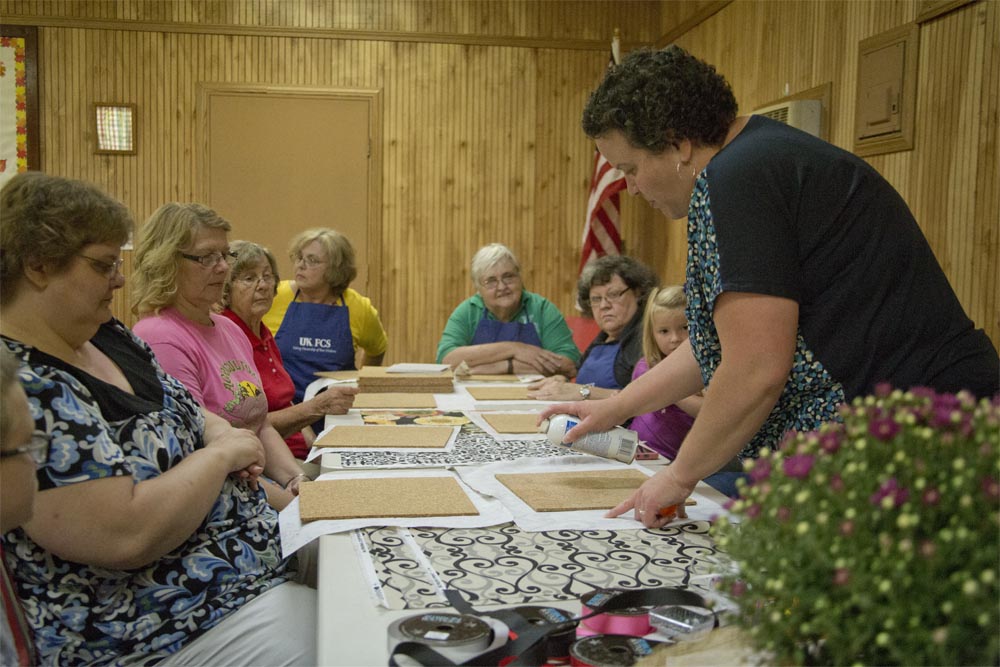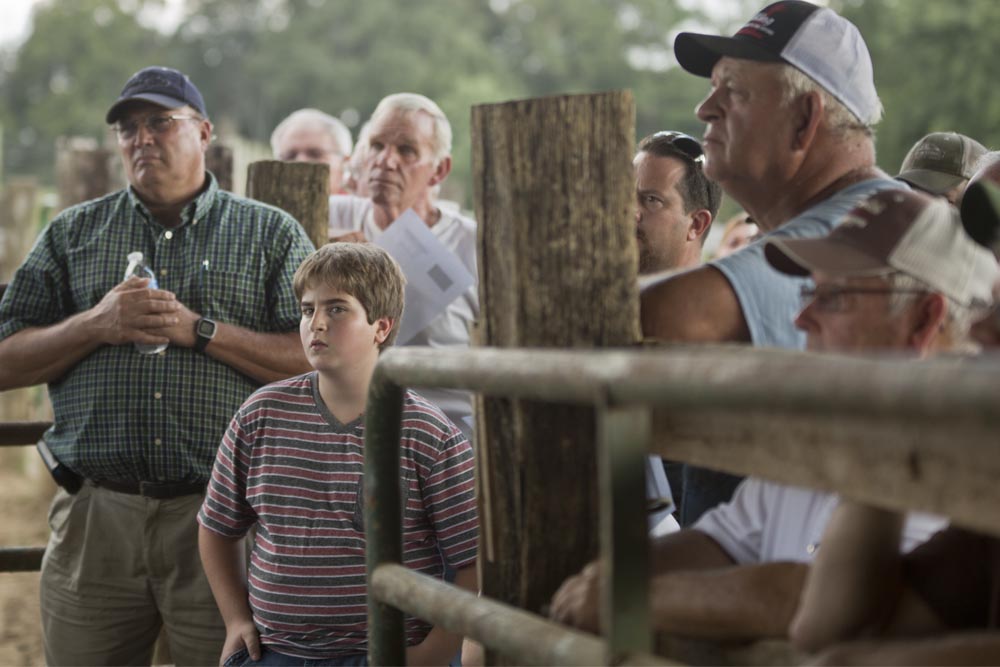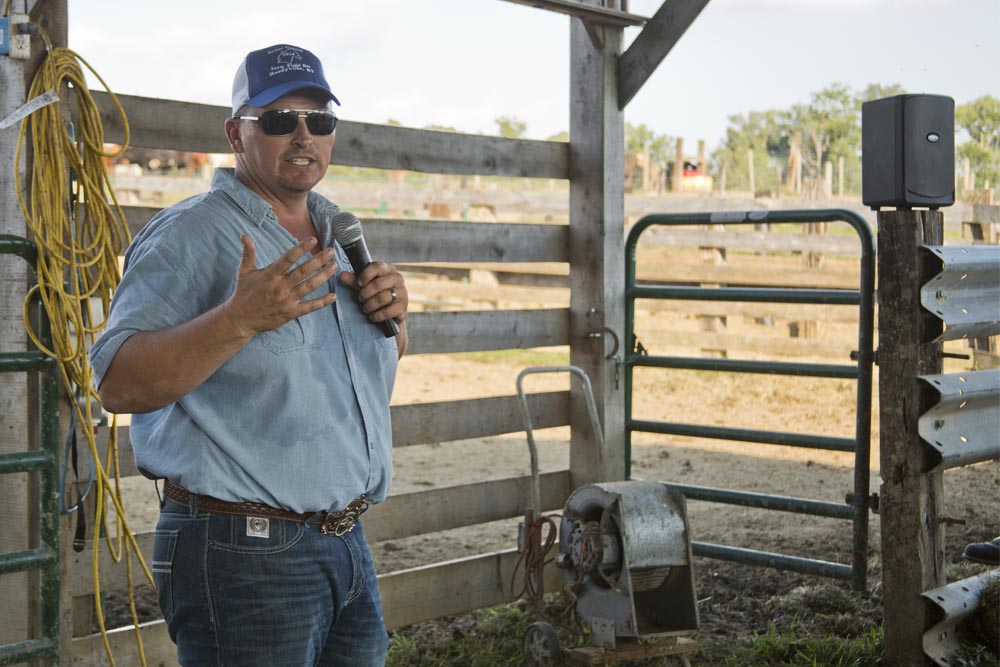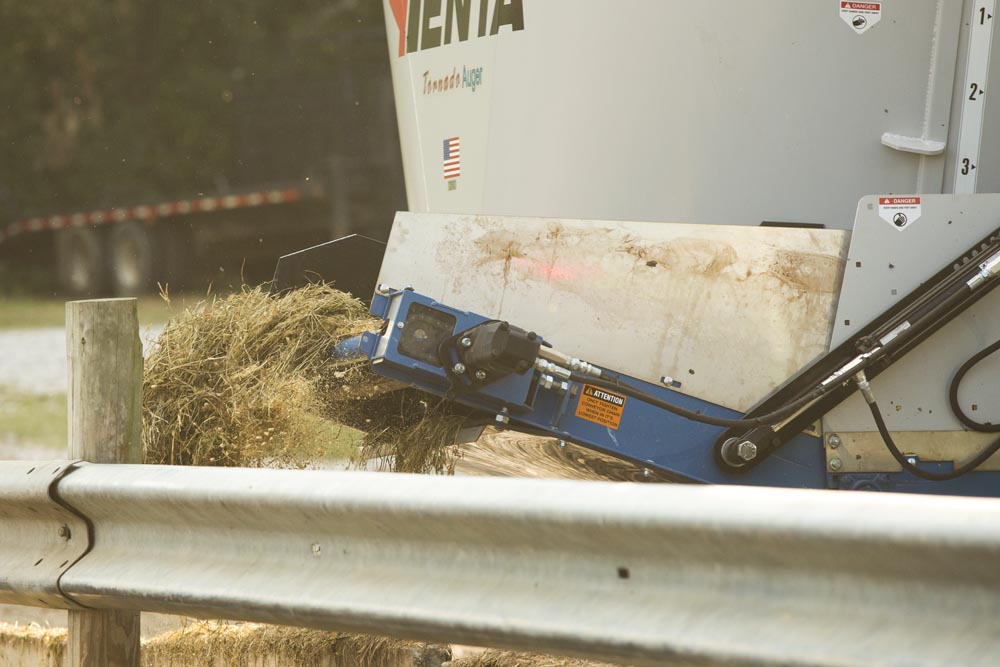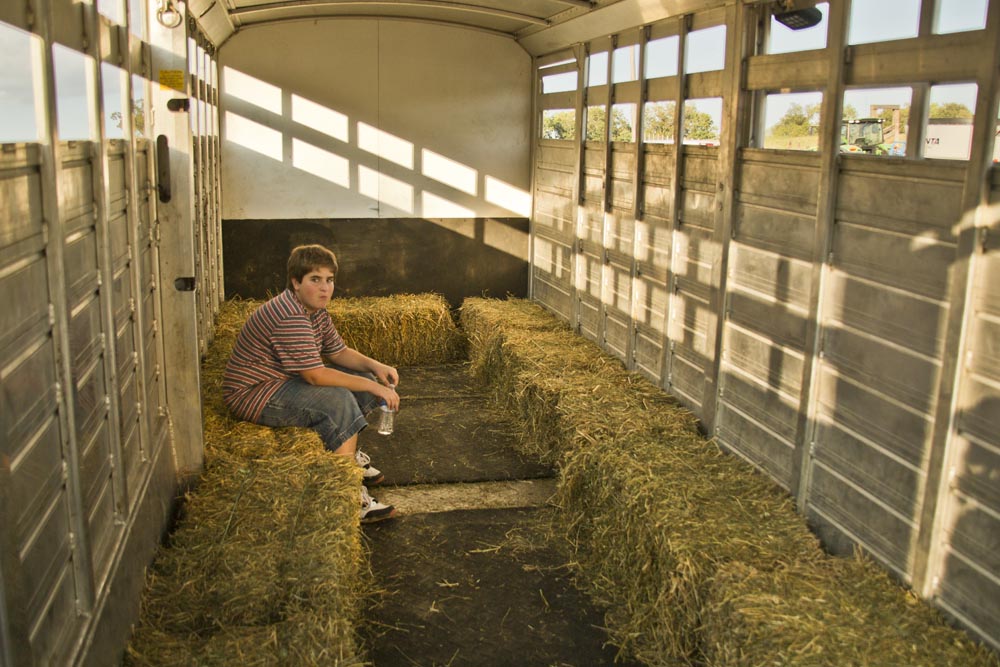2014 Farm Bureau / Extension Service Field Day
The annual Butler County Extension Service & Farm Bureau Field Day was held on Thursday September 4, 2014. This years field day event was based at the Reedyville Rural Development Center with demonstrations and guest speakers being held at Farris Farms (approximately 2.5 miles beyond the Rural development center on Highway 185).
At the Reedyville Center for Rural Development, vendors had multiple tables set up with special offers and swagger such as ink pens and informative material such as pamphlets. Booths included FSNEP Education- Extension Service, Animal Health International, Soil Conservation District, Butler County 4-H, Zoetis Animal Health, Anipro- Liquid Suppliment, and Farm Bureau- Local Member Benefit Program. Beginning at approximately 4:30 P.M, a vast majority of the guests made the short journey to Pharris Farms for demonstrations. Many drove their personal vehicles, but some chose to ride in the designated transportation van or the cattle trailer lined with bales of straw. The remaining minority of the guests remained in the building to attend informative assemblies such as "Cooking With Local Foods" and "DIY Fabric Bulletin Board" led by Shanna Drake of the Kentucky Division of Conservation and Tracy Cowles, FCS Agent for the UK Extension Office.
Meanwhile at the farm, guests were led into a rather large outdoor canopy area where they leaned in to observe the guest speakers who were stationed on the other side of the dividing fence.
First to speak was Dr. Jeff Lehmkuhler, a beef specialist with the University of Kentucky. His presentation regarded proper feeding rations and balanced nutritional ratios as they apply to gestating cattle. A delicate balance must be observed and responded to with regard to a gestating cows intake of Crude Proteins (CP) to Total Digestible Nutrients (TDN). For a simplified example, the diet of a 1,000-pound gestating cow should be about 8% CP and 54% TDN under optimal conditions. Often times, overwhelming heat and/or drought will reduce foraged resources such as nutrient-rich feeding hay. Under these circumstances, supplements will need to be implemented to balance the nutritional requirements of the animal.
Danny Farris, the owner of the farm then took the microphone to discuss the logistics of managing a high volume cattle operation. He explained the methods used in feeding calves, describing what a cattle manager should ordinarily expect when perpetuating controlled weight gain in a head of cattle. The target weight gain for a standard cow should be approximately 3 pounds per day. The particular cattle operation at Farris Farms has a maximum capacity of approximately 800 heads of cattle, although Mr. Farris generally prefers to keep it just under capacity at between 600 and 700 heads. Farris Farms exhibits a very low death rate among the herd, but the overwhelming intensity of the heat and humidity of the summer took its toll and raised the death rate of the herd to 3%. Heat stress can be a very serious and deadly affliction to the herd. A cow will experience an elevation in heat stress beginning at temperatures of 80 degrees Fahrenheit. While 80 degrees may not be deadly for cattle, it is important to keep in mind that cows rely on their respiratory system to lower their body temperature; cows are not effective at sweating. The peak body temperature of a cow is generally attained 2 hours following the peak in ambient temperature and it generally takes upward of 6 hours before the animal is able to dissipate its heat load.
Dr. Eddy Grimes took the metaphorical podium next to lead an extended discussion regarding vaccination in livestock, particularly those in gestation. "You can't afford not to." said Grimes, referring to the potential financial detriments that generally accompany failure to adequately vaccinate. An outbreak of a deadly illness that goes untreated or unhedged within a herd can cost the stockman thousands of dollars in loss of livestock. The meat can be cooked and consumed privately but cannot be sold to conventional vendors. Among the multitude of vaccination catalysts, the only two that were relevant in the discussion were attenuated and inactivated.
Attenuated vaccines are generally nurtured in a way that makes a particular viral strain super effective at replicating within a specific cell culture or embryo. As a result, the virus "Forgets" how to replicate within the culture of the organism for which the vaccine is intended to assist. This attenuated (modified live vaccine) is injected into the animal. Following this, if a foreign strain of the virus is introduced to the organism, the overwhelming presence of the attenuated virus quickly hinders the foreign virus from replicating.
An inactivated (killed vaccine) functions as a result of foreign treatments (heat, chemicals) being used to completely deactivate the pathogen. This is carried out and delivered in a way that allows the organisms immune system to still recognize and build an offence/defense against the pathogen. Because of this retention of the organisms immunorecognition, the body can be tricked into thinking it is in extreme danger from the pathogen, although the pathogen has lost its ability to replicate. Inactivated vaccines are more short-lived, as the killed pathogen is eventually neutralized. However, due to its inability to replicate, this form of vaccination is not susceptible to mutation.
Ron Glass, president of the Cattleman's Association spoke briefly regarding the annual cattleman's sale and forage contest. He invited the guests to attend the Cattle Sale Kickoff Field Event. Scheduled for Saturday, September 3rd beginning at 3:30 P.M. at Ron and Leslie Glass's farm, the event is slated to exhibit a pasture walk, delicious rib eye sandwiches, and a high degree of useful information pertaining to marketing your cattle and getting top dollar.
A farmhand of the Farris facility then mounted a tractor to demonstrate the application of a modern faming implement known as a TMR wagon. TMR, meaning "Total Mixed Ration" is a programmable machine used to adequately mix massive quantities of animal feed based on particular dietary requirements. These machines can range in size and can be either towed or self-propelled depending upon the size of the machine. Within the machine exists a series of computerized scales that are used to determine the ratios of various ingredients based on set inputs, a trailed chassis for connectivity to the power system of a tractor complete with road-legal lights, and a mixing body which consists of augers and paddles used for the mixing and transportation of mixed material within the machine.
The guests loaded back into the cattle trailer, the van, and their own vehicles to return to the ReedyvilleRuralDevelopmentCenter for the Butler County Conservation District Awards and media recognition followed by a delicious meal prepared by teen members of Butler County 4-H. Rib eye sandwiches were provided by the Butler County Stockman's Association. Drinks were provided by the Green River Feed Mill, and desserts were provided by Drake's Farm Service.
Melvin Hack was awarded the 2014 Master Conservationist Award and the 2014 Outstanding Cooperator Award was designated to Stephen Royals.
The proprietors of this event would like to extend a deep gratitude to the Pharris family, Reedyville Rural Development, Dr. Jeff Lehmkuhler, Dr. Eddy Grimes, Animal Health International, Butler County Soil Conservation District, Zoetis Animal Health, Anipro-Liquid Suppliment, Shanna Drake, Butler County Farm Bureau, Butler County Farm Bureau Women's Committee, Bob Annis, Green River Feed Mill, Drake's Farm Service, Butler County Stockman's Association, Butler County 4-H, and the Butler County Extension Service Staff.
Story and Photos by Jeremy Hack, Beech Tree News
- Log in to post comments







